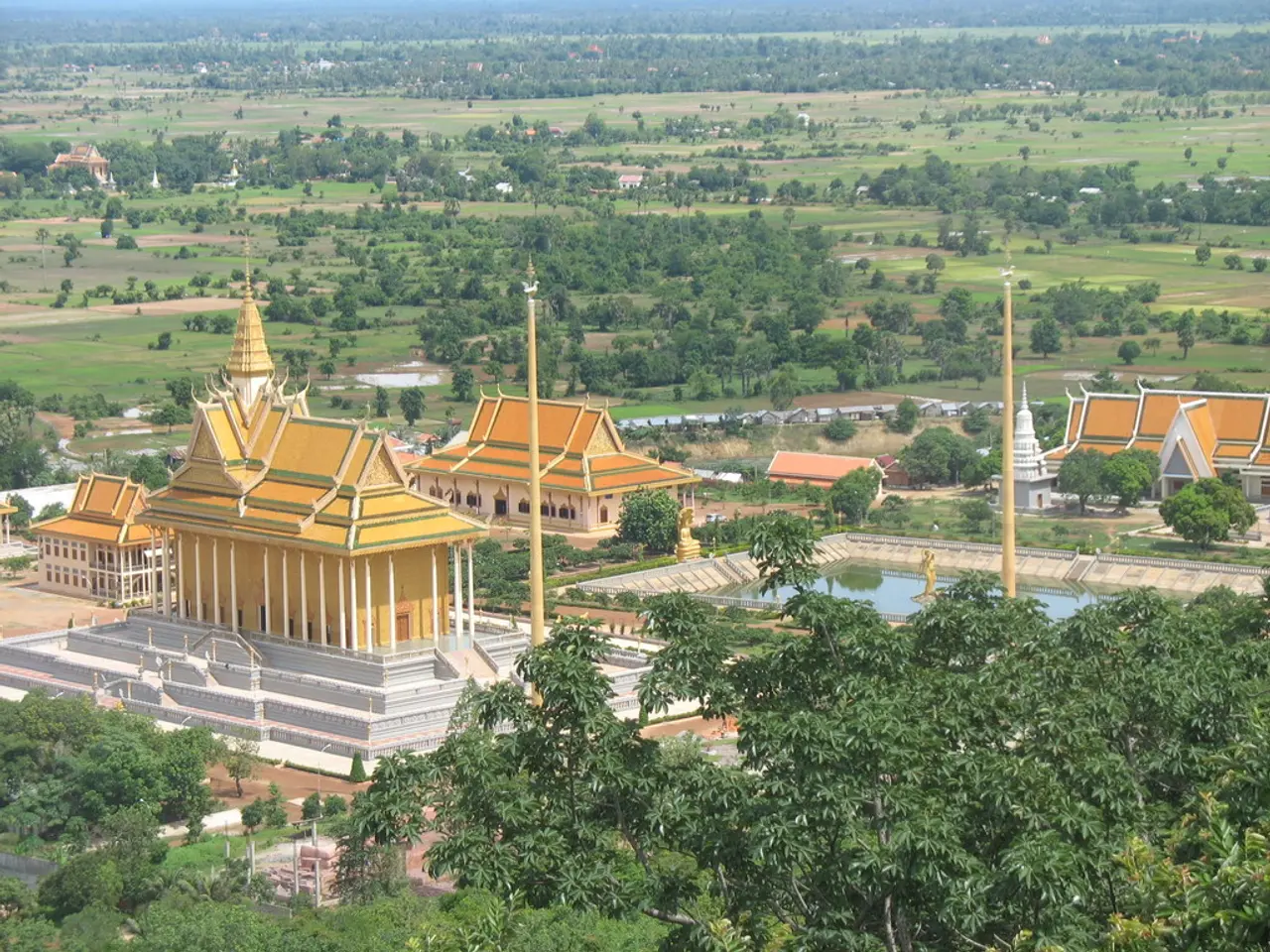Archaeological Mysteries: Intricate Water Systems Buried in the Southwestern U.S. Desert
In the heart of the arid Southwest, between AD 300 and 1450, a civilization thrived. The Hohokam, dwelling in southern Arizona, transformed the barren landscape into verdant oases through their innovative agricultural practices.
At the core of their success was an intricate network of earthen canals, engineered to bring water from the Salt and Gila Rivers to their fields. These canals, a testament to the Hohokam's ingenuity, were constructed without written plans or metal tools.
The construction of these canals was a communal affair, involving hundreds of people. Their labour resulted in a system of waterways that stretched for miles, larger than modern city blocks. Some of these canals are still visible today, their faint lines appearing in the desert after heavy rain, reminding us that the desert is full of stories hidden just beneath the surface.
The Hohokam's canals fostered not only agriculture but also social bonds and a strong sense of shared purpose. They shaped their very culture, with ceremonies held to honour water and careful rules to avoid waste and ensure fairness.
The wisdom of the Hohokam's engineering techniques feels more urgent than ever as droughts and water shortages grip the Southwest. Their story is a lesson in sustainable living, showing how technology and tradition can work hand in hand with the landscape.
Periodic maintenance was essential for the Hohokam's canal systems. Soil samples show that the canals were lined with clay to prevent leakage, ensuring the water flowed efficiently.
The Hohokam grew crops such as corn, beans, squash, cotton, and agave using their irrigation systems. Some modern irrigation and canal routes directly overlay the original Hohokam paths, a testament to the enduring legacy of their work.
Many ancient Hohokam canals now lie hidden beneath the bustling streets of cities like Phoenix and Tucson. Carbon dating of charcoal layers helps pinpoint construction periods of the Hohokam canals, offering a glimpse into their past.
The Hohokam's example offers valuable lessons for our own time. Their respect for nature, local knowledge, and communal effort are qualities that remain relevant in our pursuit of a sustainable future. Their story serves as a reminder that with careful planning and communal effort, we too can adapt to our environment and thrive.
Read also:
- Peptide YY (PYY): Exploring its Role in Appetite Suppression, Intestinal Health, and Cognitive Links
- Toddler Health: Rotavirus Signs, Origins, and Potential Complications
- Digestive issues and heart discomfort: Root causes and associated health conditions
- House Infernos: Deadly Hazards Surpassing the Flames




